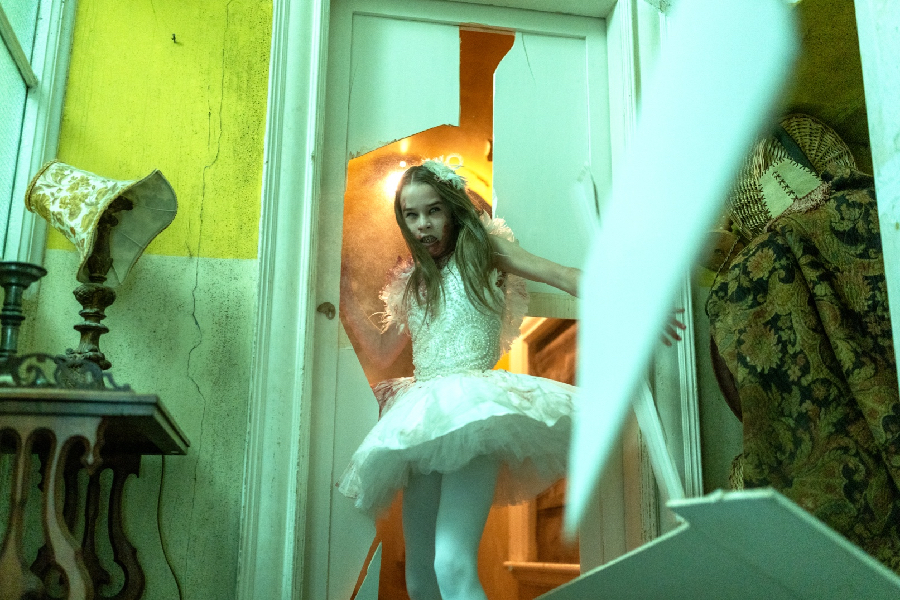In an era where movie critiques and visual essays analyze every frame of a film, artistry is often the priority. While creative in its own right, “Abigail” is a film that focuses on fun — and the watching experience is significantly better for it. The slightly comedic vampire horror/thriller movie was first released April 19.
The project is directed by Matt Bettinelli-Olpin and Tyler Gillett, who are known for co-directing the 2022 and 2023 “Scream” franchise movies and 2019’s “Ready or Not.” Bettinelli-Olpin and Gillett both have familiarity with the genre and classic horror camera tactics, such as quick zooms and awkward angles, which help jazz up the atmosphere of the film. Funky and rickety camera movements, which are also created by cinematographer Aaron Morton, add an intriguing juxtaposition with the smooth ballet movements that the titular character performs throughout the film. Sound effects also help to increase the intensity of the viewing experience. Overall, the production team was clearly intentional in how they set up the world in which the story takes place.
The sufficient blend of humor and horror helps the film strike a balance. When characters in the movie are struggling, the lack of jokes helps up the ante for viewers. The mostly-evil ballerina vampire, Abigail (Alisha Weir), is a witty and interestingly written character who is able to play off of the secret motivations of the other characters. Her deadpan humor bounces especially nicely off of Frank’s (Dan Stevens) more in-your-face style humor.
When it comes to the characterizations for those in the story, the vampire goes against the grain in appearance, physical capabilities, background story and motivation sense. On the other hand, the human characters of Joey (Melissa Barrera), Frank, Rickles (Will Catlett), Sammy (Kathryn Newton), Peter (Kevin Durand) and Dean (Angus Cloud) seem to act as more of a reflection of stereotypical horror–action film archetypes. The movie does not necessarily suffer from this fact, but the quality is not improved because of it.
All the actors played their respective characters in a way that makes sense and the performances are effective in that light. For instance, Barrera’s character is the primary looking glass through which the audience experiences the movie’s world, so her story is more emotional and developed than some of her co-stars’. She plays the somber, yet kind-hearted and level-headed character of Joey with enough precision, grit and soul to be convincing. Dean is a character that is supposed to be immature and therefore a risk factor; the audience is not supposed to root for this character per se and Cloud makes a strong effort to highlight Dean’s humorous-to-a-fault personality.
The most memorable performance is that of Stevens, who is an out–there, eccentric character that adds a nice richness to the film. Durand also utilizes physical comedy effectively.
Issues start to arise in the clunky final act, where it seems that the writers panicked and thought it was necessary to add a secret inspirational message at the end. The bulk of the film is playful and entertaining because no one making it was taking themselves too seriously. In the last half hour, the fight choreography is at the film’s best, but the hand-fisted moment of reflection and learning feels awkward. The film also tries to force sympathy for a character that did not need a tragic background in the final 15 minutes.
“Abigail” is a morbid worthwhile watch, as it is an engaging, captivating film with a few shocking twists in it. Furthermore, the film is at its best when it is not taking itself too seriously and is letting the wackiness sit in the balanced realm of funny and frightening. While not unique, the movie is ultimately a lighthearted, exciting watching experience with friends.




















